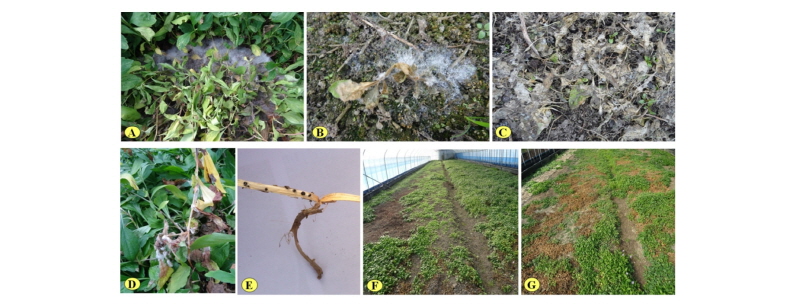Abstract
Sclerotinia rot symptoms were frequently found on the stems of Aster yomena in the Gurye region of Korea in April 2016. The symptom, watery soft rot, mainly appeared on the stems, and severely infected plants blighted. White mycelia spread over the stems of the infected plants and the soil surface. Small black sclerotia formed on the plant lesions and inside the diseased stems. Incidence of the disease was as high as 20~80% in the A. yomena fields. Based on the morphological and molecular characteristics of the isolates, the fungi were identified as Sclerotinia minor. This is the first report of Sclerotinia rot caused by Sclerotinia minor on A. yomena in Korea.
Acknowledgements
This study was supported by a grant (Project No. PJ012595012017) from National Academy of Agricultural Sciences, Republic of Korea.
Figures & Tables

Fig. 1. Symptoms and damages of Aster yomena Sclerotinia rot caused by Sclerotinia minor in Gurye. A~B, diseased plant and soil surface covered with white and fluffy mycelia of S. minor and watery soft lesions of plants on November in 2016; C, dried diseased plants on soil; D, diseased stems of a plant with white and fluffy mycelia of S. minor; E, black small sclerotia of S. minor inside diseased stem; F, damage in greenhouse; G, damage in open field.


